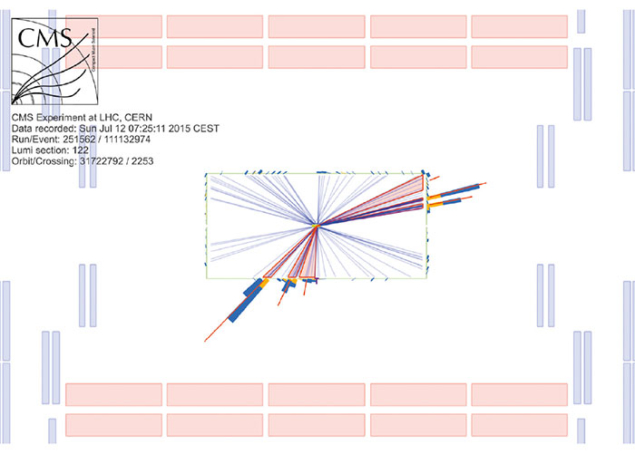With the increase in the centre-of-mass energy provided by the Run 2 LHC collisions, the production cross-sections of many new-physics processes are predicted to rise dramatically compared with Run 1, in contrast to those of the background processes. However, this increase in the cross-section is not the only way to enhance search sensitivities in Run 2. The higher energy leads to particle production that is more highly boosted. The large boosts result in the collimation of the decay products of the boosted object, which therefore overlap in the detector. For example, a Z boson that decays to a quark and an antiquark will normally produce two jets if it has a low boost. The same decay of a highly boosted Z boson will – in contrast – produce a single massive jet, because the decay products of the quark and antiquark will merge. Using jet-substructure observables, such as the jet mass or the so-called N-subjettiness, the search sensitivity for boosted objects like boosted top (t) quarks or W, Z and Higgs bosons can be enhanced.

Image credit: CMS Collaboration.
CMS has retuned and optimised these techniques for Run 2 analyses, implementing the latest ideas and algorithms from the realm of QCD and jet-substructure phenomenology. It has been a collaboration-wide effort to commission these tools for analysis use, relying on experts in jet reconstruction and bottom-quark tagging, and on data-analysis techniques from many groups in CMS. These new algorithms significantly improve the identification efficiency of boosted objects compared with Run 1.
Several Run 2 CMS studies probing the boosted regime have already appeared, using the 2015 data set. While searches for boosted entities are pursued by many CMS analysis groups, the Beyond 2 Generations (B2G) group focuses specifically on final states composed of one or more boosted objects. Signal processes of interest in the B2G group include W´ → tb and diboson (VV/VH/HH) resonances, where W´ represents a new heavy W boson, “V” a W or Z boson, and H a Higgs boson. Other B2G studies focus on searches for pair- or singly produced vector-like quarks T and B through the decays T → Wb and B → tW. The search range for these novel particles generally lies between 700 GeV and 4 TeV, yielding many boosted objects when these particles decay.
Another study in the B2G group is the search for a more massive version (Z´) of the elementary Z boson, decaying to a top-quark pair (Z´ → tt). This search is performed in the semileptonic decay channel, for which the final state consists of a boosted top-quark candidate, a lepton, missing transverse momentum, and a tagged bottom-quark jet. Here, the boosted topology not only affects the reconstruction of the top-quark candidate, but also the lepton, whose isolation can be spoiled by the nearby bottom-quark jet. Again, special identification criteria are implemented to maintain a high signal acceptance. This analysis excludes Z´ masses up to 3.4 (4.0) TeV for signal widths equal to 10% (30%) of the Z´ mass, already eclipsing Run 1 limits. A complementary analysis, in the all-hadronic topology, is now under way – an event display showing two boosted top-quark candidates is shown in the figure. The three-subjet topology seen for each boosted top-quark candidate is as expected for such decays.
With these new boosted-object reconstruction techniques now implemented and commissioned for Run 2, CMS anxiously awaits possible discoveries with the 2016 LHC data set.





